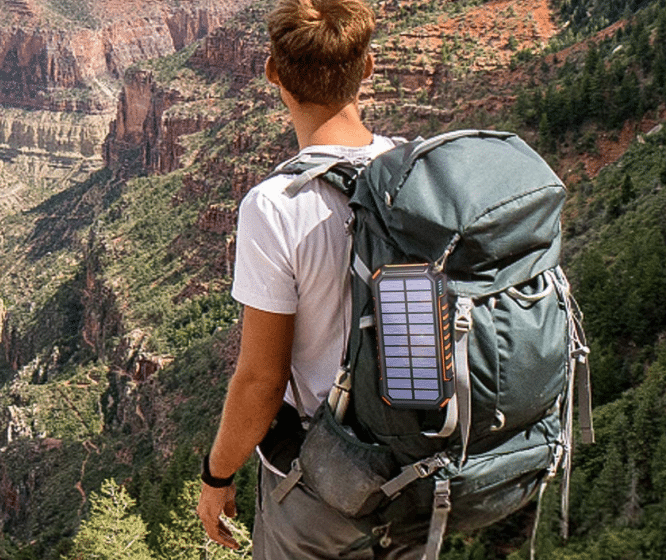If you’re heading to the great outdoors, you may be wondering how to filter water while camping.
Water filters are one of my best pieces of camping gear. They give you the power to turn even the murkiest puddle or tiniest trickle into water that is not only clean and clear but also completely safe to drink.
After all, no one wants parasites like Cryptosporidium and giardia. Drinking stagnant water can get you sick and give you salmonella, diarrhea, or deadly infections.
If you’re curious about how these modern marvels work or are interested in buying one yourself, keep reading.
If you don’t have access to natural water sources, we’ve put together a breakdown of all the different types of backpacking water filters currently on the market. We’ve also included some alternatives or additions you can add to your gear list.
Different types of filters excel in different areas. Some are great for individuals, some are ideal for large groups, and some are best used as a backup if at all.
8 ways to filter water on your next camping trip.
Squeeze Filters
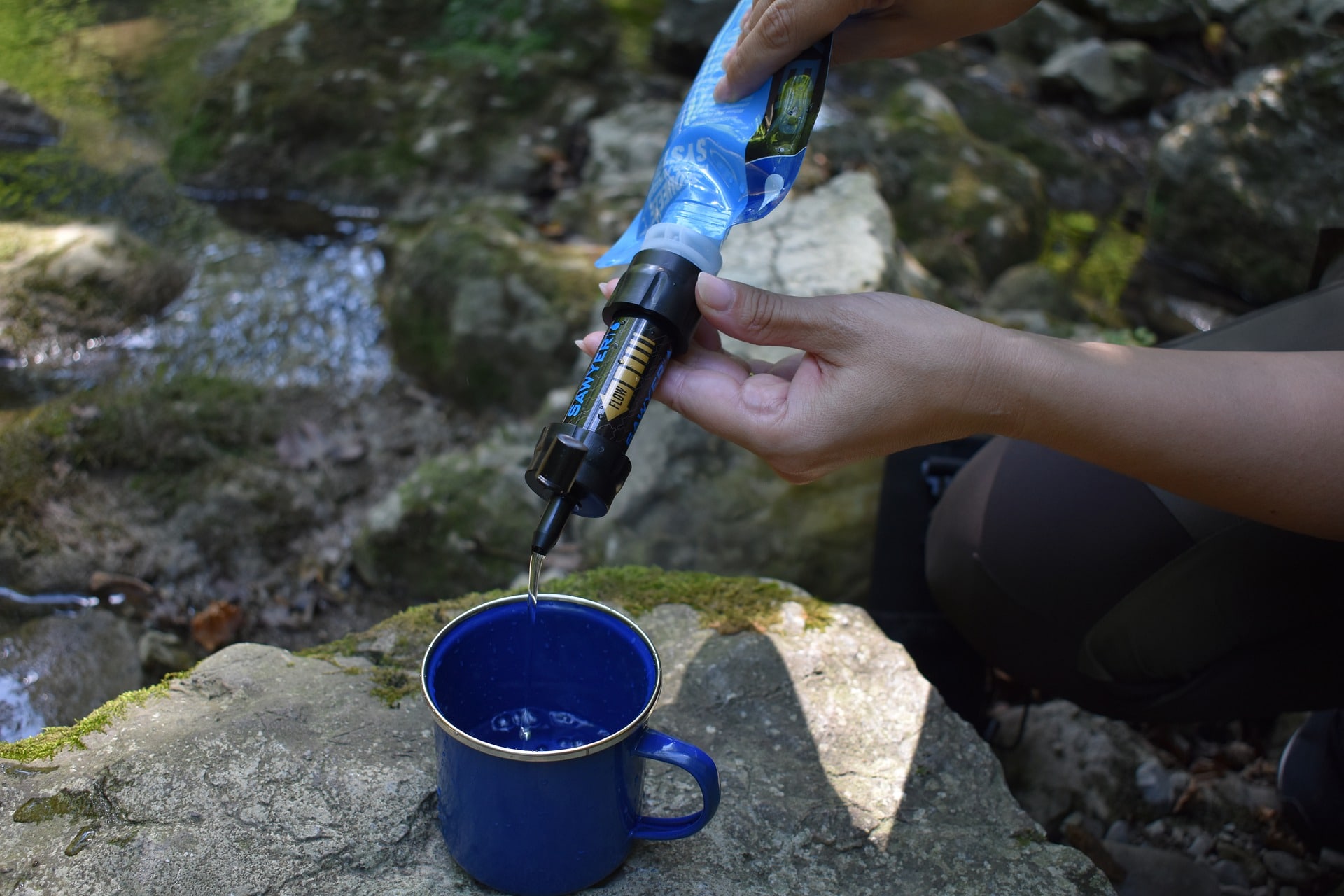

I’m going to kick it off with squeeze filters because (full disclosure here) they’re my favorite water filtration system.
A squeeze filter works by attaching to a reservoir filled with untreated water, then having that water “squeezed” out to force it through the filter. These filters are super versatile, allowing you to squeeze clean water either directly into your mouth or into a secondary wattle bottle or reservoir for storage.
What’s even better about squeeze filters is that although the name implies they require you to force water through them, most squeeze filters will actually work just fine (although a little slower) using gravity alone.
That means you can use them like gravity filters in a pinch (more on those below), or even splice them into a water reservoir hose to work as an “in-line” filter you simply suck water through.
Gravity Water Filters


Gravity filters are a popular option for groups of hikers because they process large amounts of water at a time and require zero effort to function. Just hang them up on a tree limb or clothesline and go about your business.
Gravity forces untreated water from the top “dirty” reservoir down through a filter into a second “clean” reservoir.
Once all the water has drained from the top bag to the bottom bag, it’s safe for drinking, cooking, or whatever else you’ve got in mind.
The size of your reservoir is your only limitation here, and gravity systems vary from as small as two liters to ten liters or more.
Pump Water Filters


Just like the name suggests, pump filters use a hand pump to push untreated water through a filtering element.
These systems have three parts: A collector hose, the pumping/filtering element, and a reservoir.
The collector hose is a length of hose you drop into a source of untreated water like a stream or lake.
Water is then drawn from the source and pushed through the filtering element using the hand pump. As it’s pumped through the filter, clean water flows into your reservoir of choice. Whether that’s a water bottle or hydration bladder is up to you, but you’ll need to have somewhere to catch it as you pump.
Bottle Water Filters
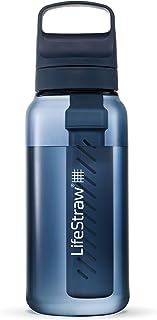

Bottle filters are a convenient option because they don’t require pumping, squeezing, OR gravity to work. Just fill up your water bottle, attach your filter, and drink up.
These aren’t really ideal backpacking filters for a few reasons though.
First, they limit how much water you can carry to the size of your bottle. Second, since this system relies on you to draw water through the filter with your mouth, you won’t really be able to process extra water for cooking.
It’s worth mentioning here that many of the “bottle filters” currently on the market share their actual filtration element with other gravity, squeeze, or in-line systems. So if you’re interested in a bottle filter, try to find one that shares its filter with another system.
Straw Filters
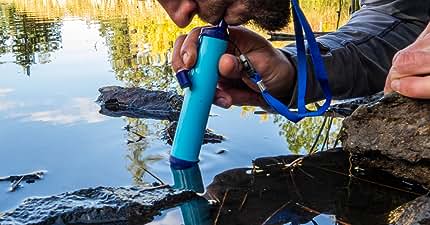

Last (and arguably least) we’ve got straw filters.
Straw filters are basically large drinking straws with a filtration element between your mouth and the water source. There are a few reasons why these aren’t really anyone’s favorite backpacking water filters, although it does filter debris from the water.
First, you need to literally be directly at the water source to take a drink. Unlike other systems, straw filters use no reservoir. Sure, you could carry a bottle of dirty water around with you and sip from it as you go but at that point… just buy something else, ya know?
The second is these filters aren’t exactly group-friendly. Personally, I wouldn’t really want to share a giant drinking straw with my best friend if I could avoid it.
Passing one around the group while everyone takes turns drinking from a stream kind of defeats the purpose of killing germs and bacteria in the first place.
A popular brand of Lifestraw and the company claims it filters out 99.999% of harmful bacteria and does not have a shelf life.
Alternatives to Backpacking and Camping Water Filters
If you’re traveling within the United States (or Canada!), a water filter is all you need to make any freshwater source drinkable.
That’s because water filters are designed to filter out sediment, bacteria, and harmful protozoa, which are the main contaminants found in our water.
What most water filters don’t do, however, is filter out viruses.
Viruses are too small for most backpacking water filters to catch, and that’s why water purifiers might be worth considering if you’re concerned about viruses or are traveling internationally.
Keep in mind that while purifiers make water safer to drink, they don’t filter out any silt or sediment from your water. That means your water might still look a little funky and have some grit mixed in to boot.
I recommend using both if you’re considering a purifier, but here are your options either way:
UV Purifiers
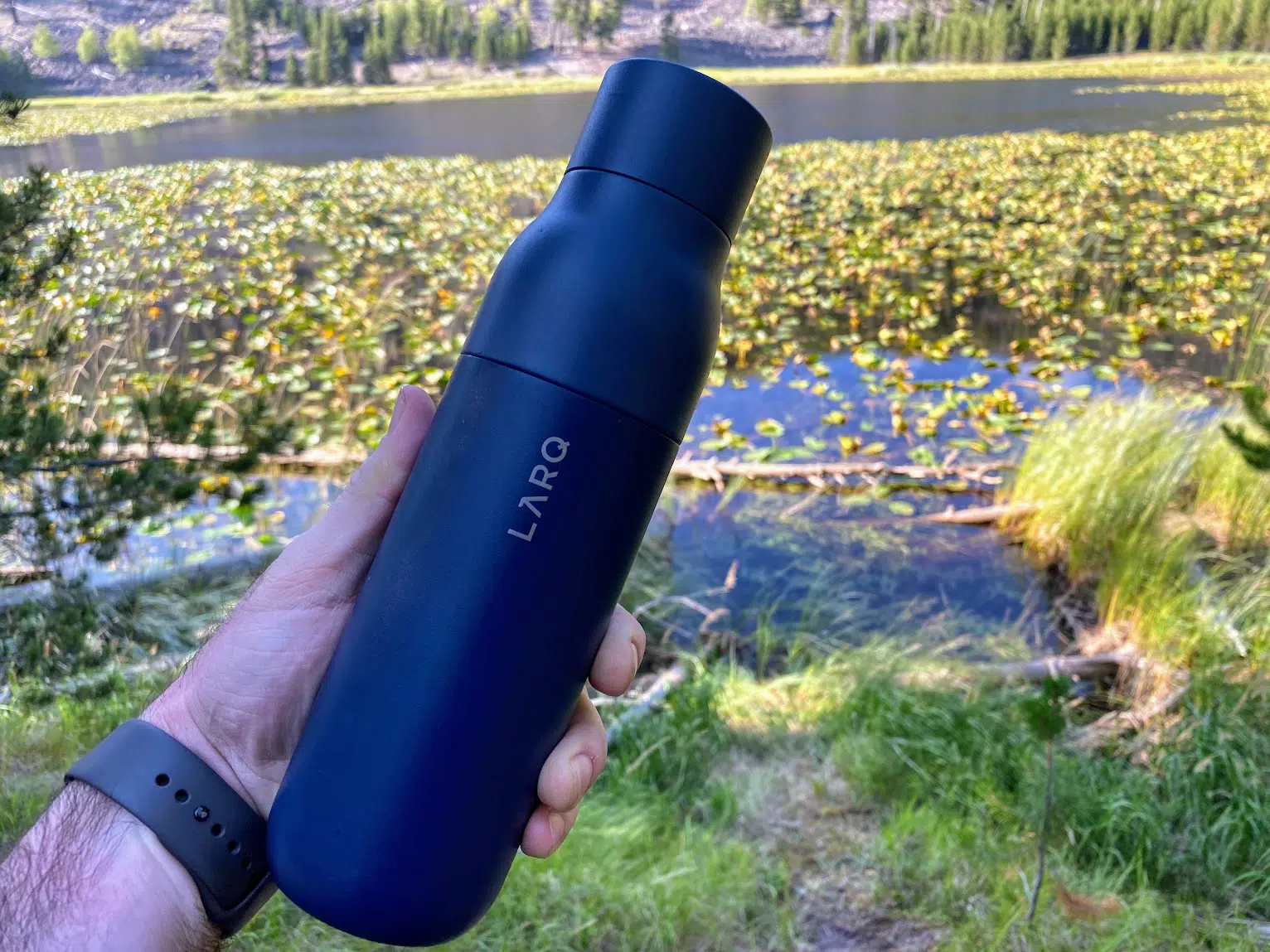

UV purifiers are basically UV light-emitting sticks you stir around in your drink to neutralize any biological pathogens.
Simply switch on the light, swirl it around for a minute or so, and drink up.
Be mindful that different models use different types of batteries, so whether yours is rechargeable or depends on single-use batteries, make sure you’ve got plenty of juice before heading out.
LARQ is a popular water purification brand that uses UV rays to filter out impurities. A benefit to the LARQ water bottle is that it turns on automatically every two hours and self cleans, battery pending. The company makes two bottles, 17 oz and 25 oz (there are 33.8 ounces in a liter of water)
Chemical Purifiers
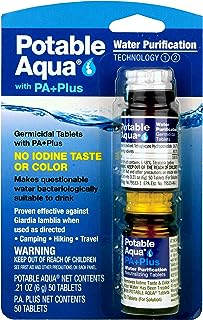

Chemical purifiers are water purification tablets you drop into your water (usually chlorine or iodine tablets) that neutralize most biological threats from impurities to bacteria to viruses.
They’re good to have on hand as a backup, but if you’re considering using chemical purifiers just know they tend to make water taste somewhere between bland and funky, and can take anywhere from 30 minutes to several hours to work.
It is very important to read the instructions from the manufacturer when using a chemical treatment.
Good Ol’ Fashioned Boiling
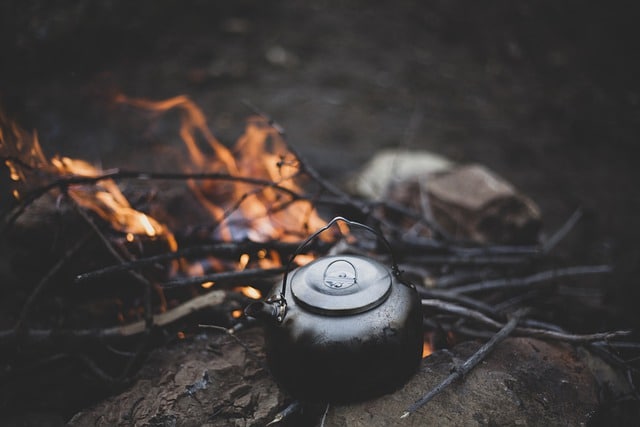

If you’re ever caught without a filter or purifier of any kind, don’t panic! You can still filter water while camping without one.
Explorers were drinking questionable water long before you were born and their original method still works as well as ever.
I’m talking about boiling water, which eliminates any and all harmful germs and such if done correctly. Bringing any water to a rolling boil for one to three minutes (it needs more time at higher elevations) will render it safe to drink.
Of course, you’ll need to wait on it to cool off, and will burn extra fuel in the process, but in a pinch, you can always rely on heat to do the trick.
Final Thoughts


Each backcountry water treatment method is different but provides close to the same result at the end of the day. Whether you are looking to purify gallons of water for cooking or just a gallon to keep you hydrated, one of the above water purification methods will do the drink.
I hope this article gave you some insight on how to filter water while camping or backpacking. Make sure you do due diligence on the best route to go. The can include going to an outdoor store to speak with camping specialists, watching YouTube reviews on different filtration products, or reading reviews on the different brands you see online.
Pin it!

